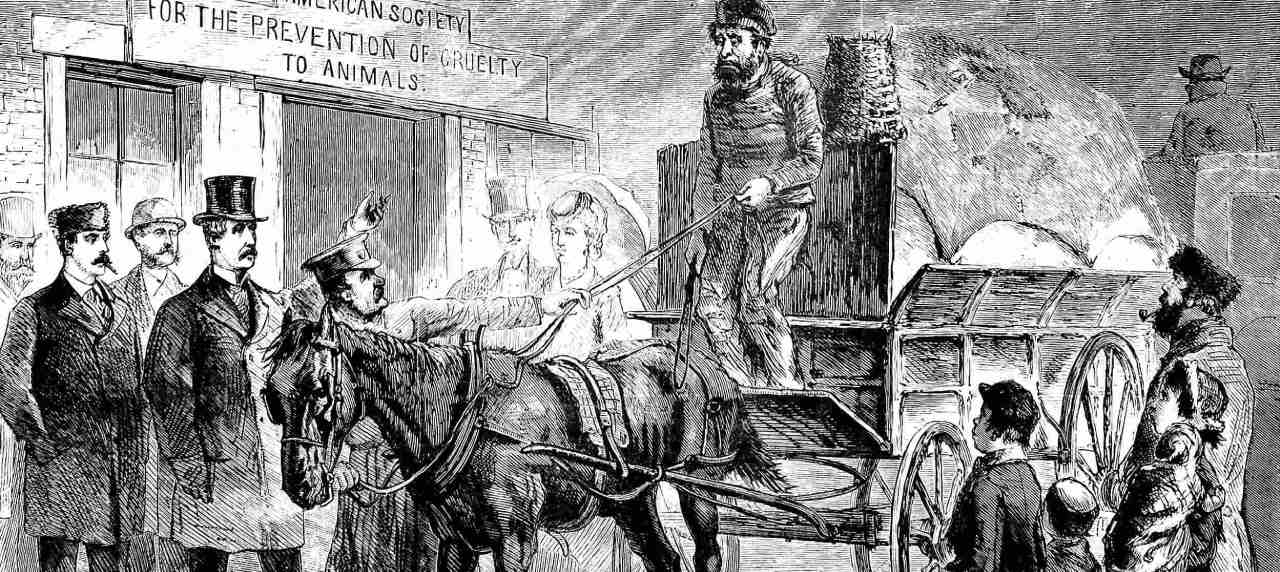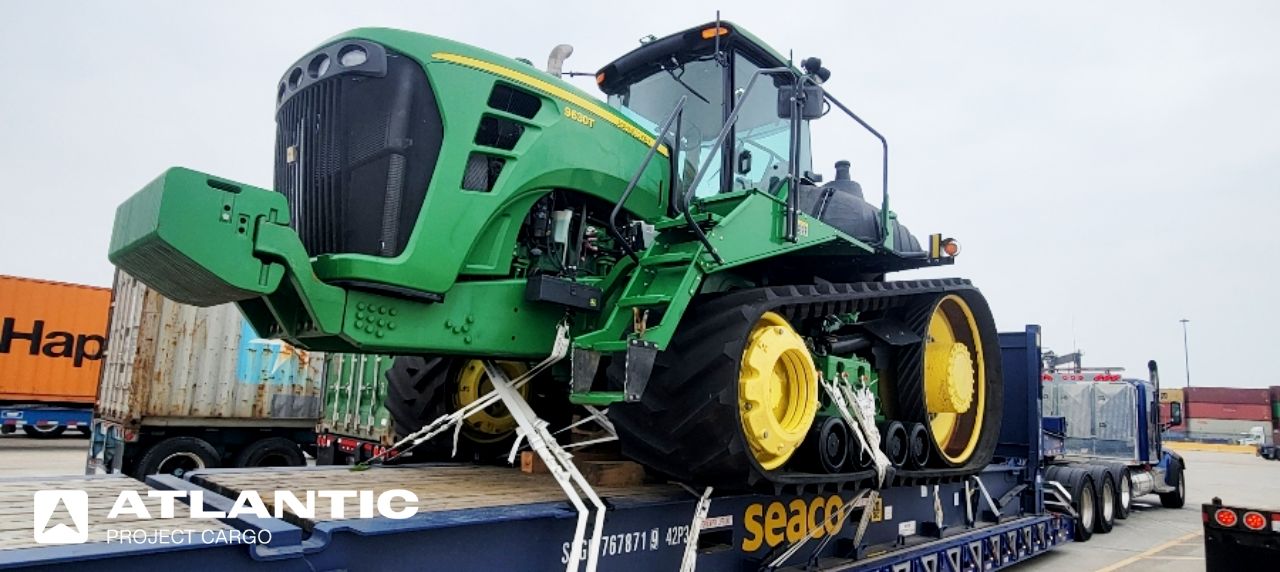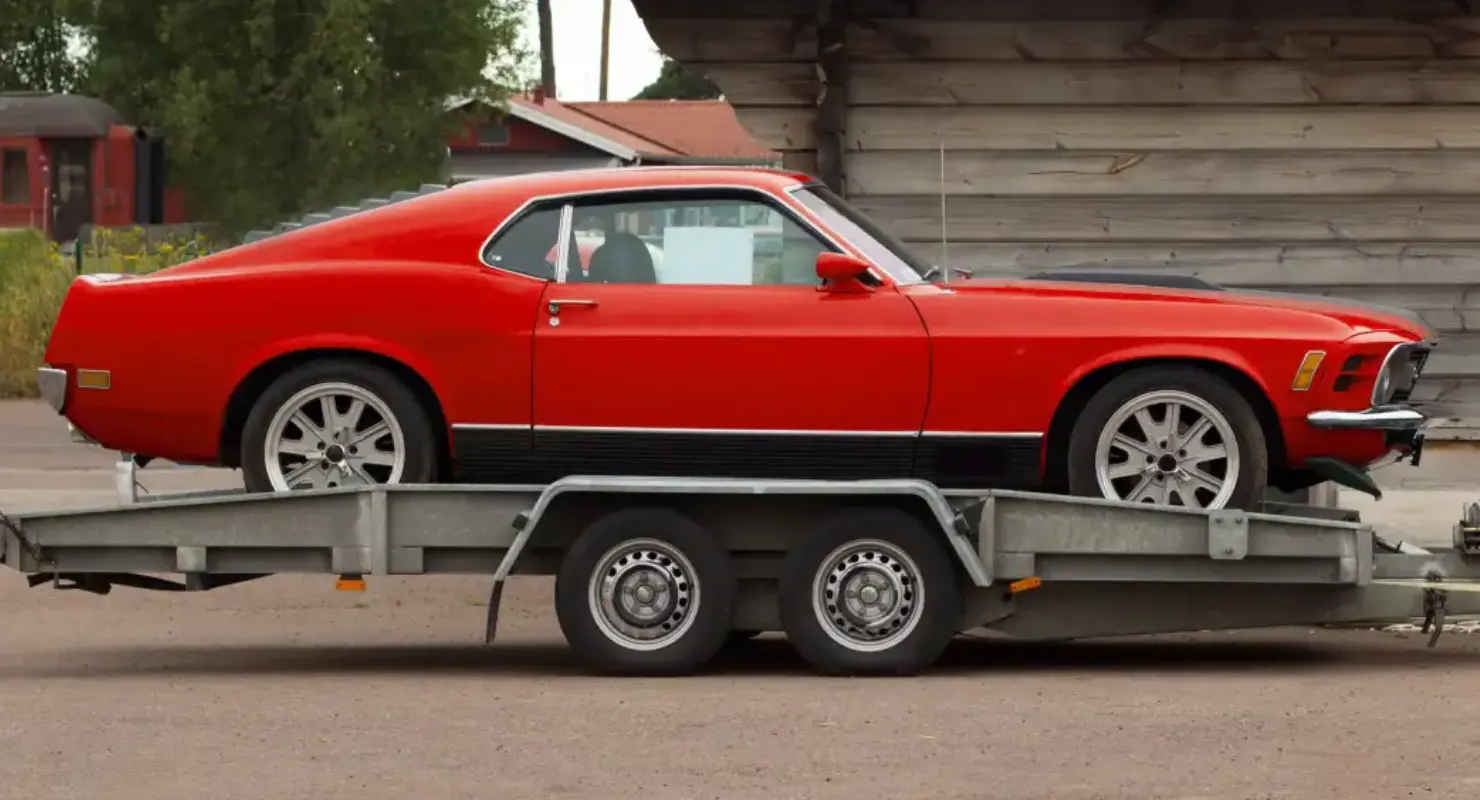
This brief guide is dedicated to drayage, the often-overlooked yet essential service in international shipping. We’ll explore its history, its role in the modern supply chain, and the various classifications that keep goods moving efficiently. Also, we will talk about drayage trucks, container drayage, and much more.
History of Drayage

The roots of drayage can be traced back to the marketplaces of ancient civilizations. Forerunners of the dray, often pulled by oxen or horses, were the essential link between arriving ships and local markets.
Fast forward to the 18th and 19th centuries, and we witness the emergence of the “dray” itself. This specifically designed, horse-drawn, sideless cart became ubiquitous in the industrial landscape. Drays were employed to transport cargo between warehouses, ports, canal docks, and railway terminals. Their range was naturally limited by the physical capabilities of the animals.
The 20th century led the way to a transportation revolution that fundamentally reshaped drayage. The powerful and versatile semi-trucks gradually replaced the dray horse. This shift transformed drayage into a vital part of the modern supply chain. Trucks could efficiently move standardized containers and trailers, significantly increasing capacity and streamlining cargo movement over short distances.
Today, drayage remains an essential component of the global logistics network. It ensures the easy movement of goods across continents by connecting various transportation modes. While the methods have evolved from animal-powered carts to modern trucks, the core function – the efficient short-haul movement of cargo – remains as crucial as ever for international trade.
What is Drayage? Meaning and Definition
Drayage, in essence, is the short-distance trucking of goods, typically within a single metropolitan area. It acts as the crucial link between different parts of the larger transportation network. Here’s a breakdown of its meaning and definition.
Meaning
Drayage refers to the movement of freight over short distances, usually involving specialized trucks designed for containerized cargo.
Definition
In the context of logistics, drayage is the process of transporting goods between various locations, such as:
- Seaports and warehouses
- Railyards and distribution centers
- Warehouses and retail stores
Why Drayage is Important?

Here’s why drayage is essential for a well-functioning supply chain.
Connecting
Drayage bridges the gap between different transportation modes. It efficiently moves containers and trailers between ports, rail terminals, warehouses, and distribution centers. Without drayage, goods would bottleneck at these points, causing delays and disruptions.
Ensuring Efficiency
Drayage keeps the supply chain moving swiftly. By facilitating the short-distance movement of goods, drayage helps businesses meet tight deadlines and get products to market faster. This efficiency translates to lower costs and increased customer satisfaction.
Intermodal Shipping
Drayage allows businesses to leverage the strengths of different transportation methods. For example, goods can be shipped long distances economically by sea and then efficiently delivered within a city by drayage trucks. This flexibility optimizes costs and environmental impact.
Port Congestion Relief
Drayage helps prevent overcrowding at ports. By quickly removing containers from port terminals, drayage frees up space for incoming cargo ships to unload, reducing congestion and delays.
Specialized Equipment
Drayage trucks are often outfitted to handle specific cargo types, such as refrigerated containers or oversized loads. This specialization ensures the safe and efficient movement of a wider variety of goods.
Drayage Classifications
Drayage, though often thought of as a single service, encompasses a variety of specialized movements within short distances. Here’s a breakdown of the most common drayage classifications:
- Inter-carrier Drayage
This is the most common type. It involves transporting goods between different transportation carriers, like moving containers from a rail yard to a seaport for international shipping - Intra-carrier Drayage
This refers to moving goods between two hubs owned by the same carrier company. For instance, a drayage truck might move containers between a shipping company’s warehouse and its port terminal - Pier Drayage (Port Drayage)
This is specifically focused on moving cargo between a seaport terminal and nearby locations, such as warehouses or rail yards. It ensures a smooth flow of goods arriving or departing by ship - Shuttle Drayage
This involves the temporary movement of containers to a holding area, often used to alleviate congestion at origin hubs. It’s like a staging area for containers waiting for further transport - Expedited Drayage
This is crucial to time-sensitive goods that require rapid movement. It’s often used for perishable items or materials needed urgently for production lines - Door-to-Door Drayage
This goes beyond the typical short-haul and provides a complete delivery service, transporting goods directly from the origin (like a factory) to the final destination (like a retail store).
What is a Drayage Truck?
A drayage truck is a specialized type of truck used for short-distance transportation of freight, especially containerized cargo.
Here are some key characteristics of drayage trucks:
- Size and Class
Drayage trucks are typically heavy-duty vehicles, classified as Class 7 or 8 trucks. These are powerful trucks designed to handle the weight and size of containers - Focus on Short Hauls
Drayage trucks operate within a limited range, usually within a single metropolitan area - Trailer Compatibility
Drayage trucks are equipped to handle various container types, including:- Standard dry containers
- High-cube containers
- Refrigerated containers (reefers)
What is Container Drayage?
Container drayage is a critical behind-the-scenes service in the world of international shipping. It’s a type of third-party logistics (3PL) that focuses on the movement of shipping containers over land. While drayage typically refers to shorter hauls, it can also encompass longer distances depending on your needs.
Drayage companies act as expert coordinators, managing the movement of your containers between ports, rail yards, warehouses, and other facilities. They ensure everything runs smoothly and adheres to your schedule. This often involves collaboration with various parties, such as shippers, consignees, container yards, steamship lines, and railroads.
Atlantic Project Cargo understands the complexities of international shipping regulations across different countries. With our drayage expertise, you can be confident that your cargo will arrive where it should be, regardless of its destination.
Drayage/Over-road-trucking/Intermodal Shipping/Cartage

In simpler terms, Drayage and Cartage handle the short-haul legs within a city, while OTR trucking tackles the long-distance journeys. Intermodal shipping combines these elements, using different transportation modes for efficiency, with drayage trucks playing a crucial role at each end.
Cost and Fees of Drayage
Here’s a breakdown of the factors that influence drayage fees and how to navigate them.
Base Rate
This is the core cost of the drayage service, typically calculated per mile, per container, or per hundredweight (CWT – a unit of 100 pounds). Distance, the weight of the cargo, and container type (dry van, reefer, etc.) all affect the base rate.
Other Charges
These are additional fees on top of the base rate that cover services beyond basic transportation. Here are some common ones:
- Fuel Surcharges
These fluctuate based on current fuel prices - Detention Fees
If the container is held beyond a designated free time allowance at pickup or delivery points, these fees kick in - Chassis Charges
The cost associated with using a special chassis to haul the container - Overweight/Oversized Fees
If your cargo exceeds weight or size limitations, you might incur extra charges
Factors Affecting Drayage Costs
- Origin and Destination
The distance between pickup and delivery locations significantly impacts the cost - Cargo Weight and Type
Heavier cargo or specialized containers like reefers typically cost more to transport - Demand and Availability
During peak shipping seasons, demand for drayage services can increase, driving up prices - Free Time Allowance
Negotiate a longer free time window to avoid detention fees if you anticipate delays
Negotiating Drayage Costs
- Compare Quotes
Get quotes from multiple drayage companies to compare rates and services offered - Optimize Routes
Plan efficient routes to minimize deadhead miles (empty truck travel) which can reduce costs - Consider Volume Discounts
If you have frequent drayage needs, negotiate volume discounts with a drayage provider
How to Pay Less for Drayage Services?
Drayage fees can add up, but there are steps you can take to reduce them. Here are some tips.
Smart Packaging
The way you pack your goods can impact the drayage cost. Consider using floor-loaded crates for easy handling, which often have lower rates than special handling for fragile items.
Consolidate Shipments
Drayage is often charged by the hundredweight (CWT). Combining multiple shipments into fewer, heavier ones can reduce the total CWT and lower your bill.
Ship Efficiently
Plan your shipments to minimize the number of trips needed. Flexibility with pick-up and drop-off dates can help avoid extra charges for driver wait times.
Separate Mixed Loads
If you have a shipment with both crated and fragile items, consider separating them. This can allow you to take advantage of lower rates for crated freight.
Plan Ahead
Booking drayage services in advance can sometimes be cheaper than last-minute arrangements.
Conclusion
Drayage plays a critical role in the intricate world of international shipping. This guide has shed light on its historical journey, its significance in the modern supply chain, and the diverse classifications that keep goods moving efficiently.
Atlantic Project Cargo understands the complexities of global logistics, including the movement of oversized or over-dimensional equipment. We offer expert drayage solutions to ensure your cargo reaches its destination seamlessly, regardless of size or weight.
Contact us today to discuss your specific drayage needs and experience the Atlantic Project Cargo difference.
Read More


